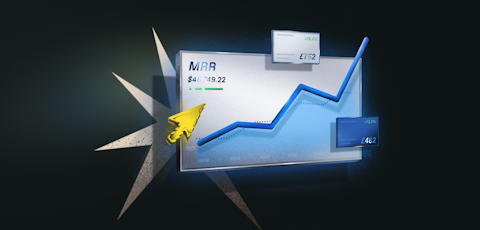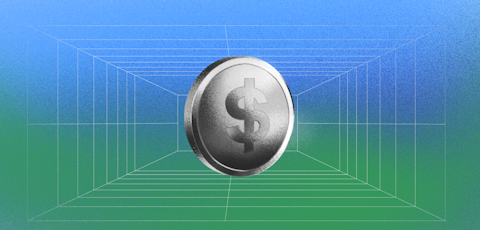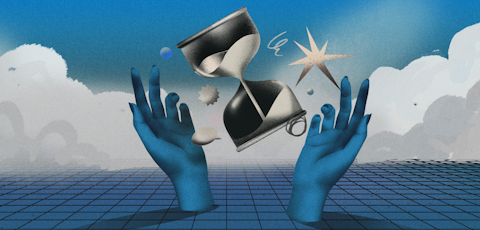Talking churn: How SaaS business can reduce and prevent churn

Churn: the dreaded metric that can make or break a SaaS company.
Or is it?
While retention is key, what’s important is understanding churn in relation to your product, business model, and customers – and implementing the right tactics and strategies to prevent churn and increase retention.
To find out what this looks like for SaaS businesses, we spoke to our SaaS experts about everything from how to think about churn to how to manage it across payments, subscriptions, and customer success.
How should SaaS companies think about churn?
“The first thing to do is think about the type of SaaS company you are. Some companies who are selling to a lot of consumers see higher churn, and this is okay. If you’re selling hundreds of thousands of dollars a year, having double digit churn might be more of an issue. So the first thing is understanding which bucket you’re in.
“The second thing is to think about churn holistically, it’s not just a set of tactics to stop people canceling. Here at Paddle, we think about this on two axes. First, it’s voluntary versus involuntary – people choosing to cancel versus people not choosing to cancel but their subscription ending anyway, normally due to failed payments. And then on the second axis, it’s looking at before and after a churn event.
“With those axes, you end up with a nice two-by-two grid and the goal is to fill that in with strategies. So, be that cancellation offers in the top right, how do you stop people when they are choosing to cancel? How do you stop payments from failing in the first place? And really the best in class churn reduction strategies cover all four of those.”
- Ed Fry, Head of Demand Generation
For more on the four-part churn reduction strategy, check out our guide on how to calculate and reduce churn .
Why is the way you collect and process payments important in relation to churn?
“The reason why the way you collected the payment initially matters, is ultimately because if you have bad data going in, you’re going to have bad results on the other side.”
“With churn, it’s not just about ensuring that the initial transaction goes through, it’s about ensuring that your data supports transactions across the customer lifecycle. Meaning that the appropriate entities understand that there is authorization and authentication from this buyer about not only the first transaction but also any transaction that comes after.
“Another thing that is really important when you are collecting this transactional information is again recognizing that initially what this person is going to pay and what they want to pay in the future, can differ. Not only because it might have started as a free trial but also sometimes there are things like usage which can differ. So, are you communicating that to the buyer? Because if you’re not then that buyer likely has the opportunity to dispute the charge.
“This is why a lot of times when you see fraud as a reason for transactions being rejected, it’s not true fraud, it’s “friendly fraud”. It’s either this buyer is not satisfied with the product and they didn’t see an easy way to cancel it or this buyer did not think that they would be paying whatever was just charged on their statement.
“Another reason is maybe they don’t recognize the name of your company on their credit card statement. Maybe what you’re using as your domain and what you’re using on credit card statements are different. So, it’s making sure that all of that information is also really transparent and communicated at the time of purchase and making sure the buyer knows exactly what they are receiving.”
- Quinisha Anderson, Senior Payments Product Manager
How can SaaS businesses optimize payment processes to prevent and reduce churn?
“The most important thing to do in order to optimize your processes is to ensure that you are up to date with what the current mandates and requirements are. And those things change as well - and we saw this a lot over covid - where something that was going to be put in place got delayed because of everything that happened in the world but is now going full steam ahead again.
“For instance, you have places like India introducing things which are very different to most of the rest of the world. We are used to having to request 3DS authorization on the initial purchase because the buyer is present, with their device, when they are transacting (at least that’s what we’re trying to prove). However, in India, there’s a rule now saying that we have to request 3DS on all recurring payments as well. And if we don’t, then this transaction will immediately be declined.
“So, you need to give yourself the best chance to even have the opportunity to engage with this buyer by first knowing that that is even a rule or what you could see happening, in India specifically is your recurring transactions plummeting completely.
“So, I would say in order to optimize you have to first know and it’s quite a lot to manage because they change from time to time and they also change from one country or region to another.”
- Quinisha Anderson, Senior Payments Product Manager
A big chunk of churn comes from people choosing to cancel their subscriptions, why is that?
“This type of churn is called voluntary churn – where customers actively choose to cancel their subscription with you and, at Paddle, we see this accounting for between 60-80% of SaaS companies’ customer churn.
“Customers choose to cancel for a variety of reasons, such as deeming your product too expensive or they feel like they have already achieved what they originally set out to do with your product. But the common thread through all of these reasons is that the customer no longer wants to exchange their own money – or their department’s budget – for their own perceived value of your product.”
- Johan van Meeuwen, Revenue Delivery Advisor
What can businesses do to address voluntary churn?
“Efforts exist across the entire customer lifecycle to minimize churn and improve retention. It’s not an issue that exists just for customer success. This is a product issue, it’s a marketing issue, and a sales issue (if you have a sales team as well).
“For instance, even at the early stage of initially acquiring customers or on your pricing and plans pages, you should ask yourself: Is what we’re asking our customers to pay for in our plans – known as your value metric – reflective of the value that customers are expecting to receive from our product?
“If there is any sort of misalignment here, then this will lead to customers voluntarily churning later on.
“Another example is once your customers have actually subscribed and they’re going through your onboarding process – ask yourself the question: Does this onboarding process get customers to realizing value from our product as quickly as possible?
“And you’re really aiming to reduce that “time to value” to avoid that particularly painful churn where you’re losing customers right after you acquire them.”
- Johan van Meeuwen, Revenue Delivery Advisor
How does the way you manage subscriptions impact churn and customer lifetime value?
“The customer experience is really important when you manage your subscriptions and you want to reduce churn and improve the customer lifetime value. Ideally, you want to give customers a way to manage their subscriptions on their own. So, whether they want to upgrade, downgrade, if they want to have add-ons on their subscriptions or even if they want to cancel, give them an easy way to do these kinds of things.”
- Rebecca Cotton, Senior Subscriptions Product Manager
Why is making it easy for customers to stop their subscriptions so important?
“Making subscription management easy for your customers is really important, even when it’s about cancelation because cancelations are the last touchpoint that a customer may have with you. If you make that easy for them, there is a higher chance that they might actually reactivate. You can also make it easy for customers to actually reactivate their subscriptions if they want to come back to you. This also increases the customer lifetime value.
“Another method you can use is pausing and unpausing, where people don’t actually cancel their subscription but just stop using your product for a certain time. The important part is to be flexible and let customers handle their own subscriptions, towards their needs.”
- Rebecca Cotton, Senior Subscriptions Product Manager
How do I know which alternatives to canceling I should offer?
“What’s really important is understanding why customers want to cancel their subscription. Based on that, you can look at what are good alternatives to canceling.”
“For example, seasonality might be a thing, or subscribers might use your app for irregular tasks, such as research. Here, there are two mechanics you could use. Either reduce your price point and keep the subscription active so it doesn’t make sense for them to cancel or you can think about letting them pause and only activate the subscription as they need it. You could even look at models like usage-based models where they pay per use rather than on a constant basis.”
- Rebecca Cotton, Senior Subscriptions Product Manager
How can businesses use churn to understand more about their product and their customers?
“The first thing to admit to yourself is that, as a product-led SaaS company, you’re going to experience churn on some level. But the opportunity that some SaaS companies miss is gathering the reasons for churn and why customers are choosing to leave you in the first place."
“As an absolute bare minimum, SaaS companies should be collecting cancellation reasons from their customers and then - most importantly – feeding these learnings back into all elements of your product and customer experience."
“So, for instance, if they leave because they’re missing a certain product feature, make sure this is being fed back to your product and engineering teams to consider in the roadmap.
“Potentially customers leave because they deem your product too expensive – again, make sure this is fed back into pricing and billing model considerations to iterate, test and improve your pricing and billing.
“Also, importantly here, no two customers are going to be the same. You should be using this churn data in defining your buyer personas and building your customer segments – so that information should be going back to your marketing team.
“And finally, if there are changes made on a product, pricing or billing model level that address the concerns that customers had when they left you, then let them know. Close the feedback loop. Let these customers know of the changes via win-back campaigns or through 1:few or 1:1 marketing channels.”
- Johan van Meeuwen, Revenue Delivery Advisor



